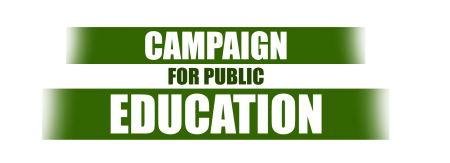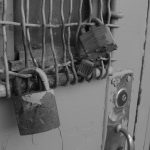They’re Closing My Neighbourhood School?
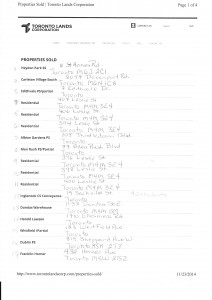
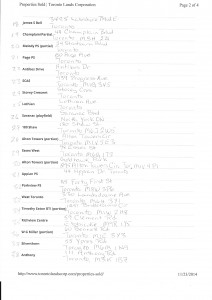
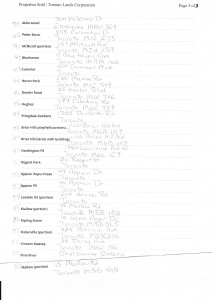 Since 2008 the Toronto Lands Corporation, has reported on the sale of 60 TDSB properties on behalf of the school board. The TLC is the real estate arm of the TDSB.
Since 2008 the Toronto Lands Corporation, has reported on the sale of 60 TDSB properties on behalf of the school board. The TLC is the real estate arm of the TDSB.
They’re Closing My Neighbourhood School? Why is the Toronto District School Board (TDSB) closing schools and severing off school yards and selling them off? It is because the school board has been systematically underfunded for the last 16 years. Provincial law states that school boards cannot operate at a deficit and if they cannot balance their budget, they must sell their property to make up the shortfall. This sale of publicly owned land, bought and paid for by taxpayers is, in fact, a provincially driven policy. Yet most people are unaware that it is happening.
The TDSB has already closed and sold 16 schools – mostly in low-income neighbourhoods. Three of them were devoted to teaching adult ESL. Two were secondary schools with large special education populations.
The provincial government created guidelines for school boards to follow when they close schools and according to a recent report from People for Education, those guidelines have been recently revised in order to speed up school closings. The sale of public assets can now proceed more quickly and easily. A neighbourhood school will be gone before the community is even aware of the loss.
If you didn’t know the fire sale was on, it is probably because the school board has taken steps to keep to whole business below the radar. School trustees retreat into “private” session any time property is going to be declared surplus, or the business of the Toronto Lands Corporation is discussed. Announcements of public meetings are made with minimum notice, restricted to parents in the effected schools and neighbours in the very immediate vicinity, and buried deep in obscure pockets of the TDSB website.
Long standing systemic under-funding of public education began when Mike Harris forced the amalgamation of the school boards in 1998. Up ‘til that time, (since 1841) school boards were largely funded by local municipality property taxes. Prior to 1998, the school boards always balanced their budgets and kept their school buildings in good condition. Funding now comes directly from the province and it’s never enough.
How bad is the shortfall? It gets bigger every year. Three years ago, the board was short $55 million; two years ago, it was short $110 million and last year, another $55 million short. The province keeps announcing increases in funding but in reality, although gross funding is up, net funding is down. The province gives with one hand but takes with the other. The province downloaded the costs of full day kindergarten, the class gap, literacy and numeracy initiatives, staff pay increases and inflation.
Net funding dropped by $450 per student between 1998 and 2009. In a high school of 1,000 kids, that means a drop of $450,000 every year. Ontario has one of the lowest levels of funding in North America. It stands 46th among 51 jurisdictions in the U.S. and Canada.
To balance its budget over 14 years of cuts, the Toronto Board has ruthlessly cut staff and whole programs. It also put off building maintenance and construction. In time, small problems become bigger ones. Now the TDSB faces a $3 billion maintenance backlog. Without revenue of its own and an inadequate Ontario funding formula, the TDSB is caught in a web of provincial policy forcing it to sell off property in order to raise funds for its crumbling infrastructure, and robbing the collective social wealth that took over a century to accumulate.
Reprinted from Labour Action, December 2014
